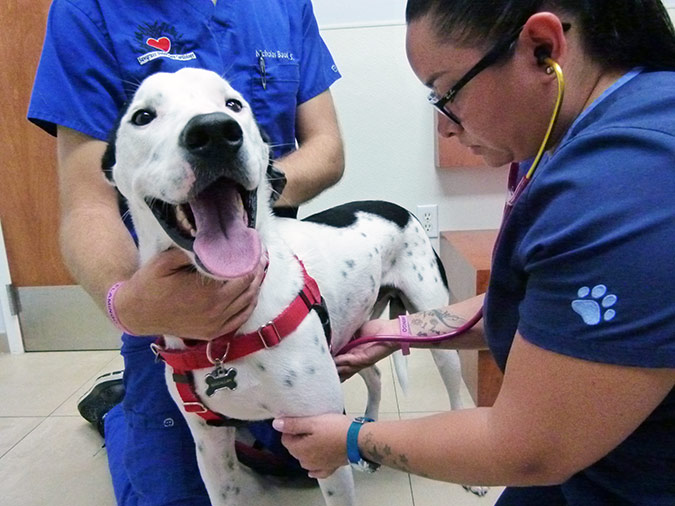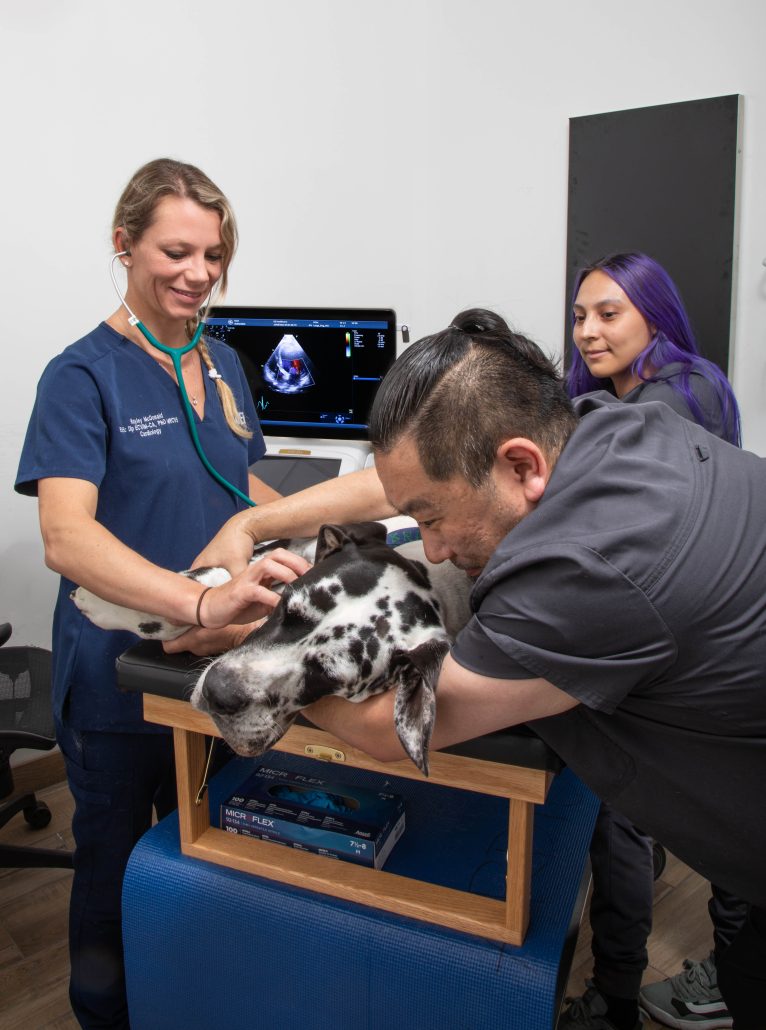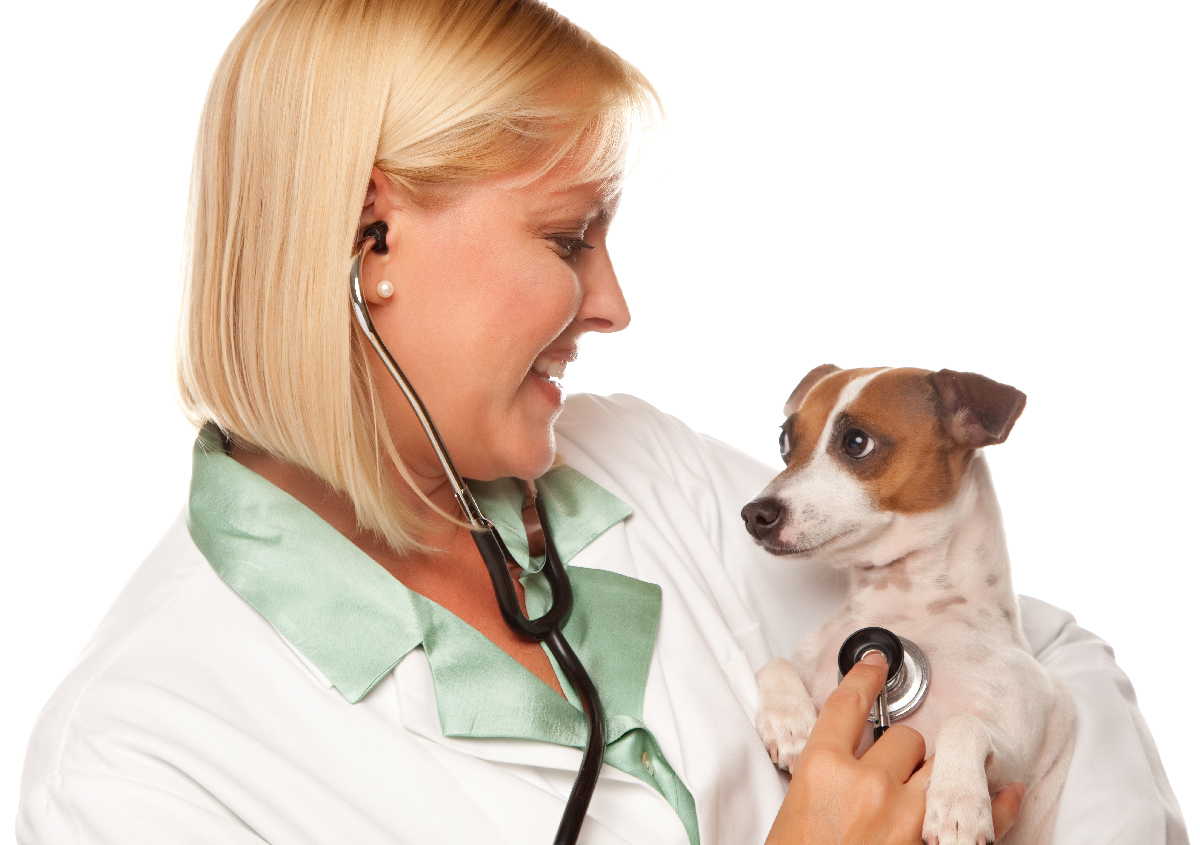What You Need to Learn About Veterinary Solutions: A Summary of Diagnostic Devices and Procedures
Veterinary services play a crucial role in maintaining the wellness of pet dogs. Regular check-ups can disclose surprise wellness issues early. Different analysis devices and procedures, such as blood examinations and imaging techniques, provide vital insights into an animal's well-being. Understanding these approaches is key for pet owners. What details diagnostic procedures are most frequently made use of, and just how can they impact a pet dog's therapy plan?
Relevance of Normal Veterinary Check-Ups
While numerous animal proprietors may ignore the relevance of normal veterinary exams, these consultations are essential for preserving a pet's overall health. Routine brows through to the vet permit very early discovery of potential wellness issues before they escalate into major troubles. Normal check-ups usually consist of inoculations, which are essential for stopping contagious conditions that might badly affect a family pet's health. In addition, these consultations give a chance for vets to analyze the pet's weight, oral health and wellness, and general problem, guaranteeing that the pet is thriving. Throughout these gos to, animal owners can also get important recommendations on diet, workout, and preventive care tailored to their certain pet's needs.
Common Analysis Procedures in Vet Medicine
In vet medicine, precise medical diagnosis is crucial for reliable treatment. Typical analysis procedures include blood screening techniques, progressed imaging innovations, and urinalysis, each playing a considerable duty in determining health problems. Comprehending these techniques improves the capacity to offer suitable care for animal patients.
Blood Checking Methods
Blood screening strategies act as crucial analysis tools in veterinary medicine, making it possible for veterinarians to evaluate the health and wellness of animals properly. These methods include collecting blood samples to assess various parts, such as red and white blood cells, platelets, and biochemical markers. Usual examinations consist of complete blood counts (CBC), which evaluate overall health and discover infections, and biochemical panels, which assess body organ feature and metabolic condition. Furthermore, serological examinations can determine particular conditions with antibody discovery. Blood testing is minimally invasive and offers important info that aids in diagnosing conditions, keeping track of health condition, and assessing responses to therapies. On the whole, these techniques play an important duty in making certain ideal treatment for pet dogs and animals alike.
Imaging Technologies Made Use Of
Analysis imaging modern technologies are crucial tools in vet medicine, complementing blood screening strategies by providing visual understandings into an animal's inner structures. Typical imaging methods consist of X-rays, which are valuable for assessing bone cracks and spotting foreign items, and ultrasound, which permits real-time visualization of soft tissues and body organs. Magnetic vibration imaging (MRI) provides detailed photos of complex physiological areas, particularly in neurological evaluations. Computed tomography (CT) provides cross-sectional images, boosting diagnostic accuracy for numerous conditions. Each of these modern technologies help veterinarians in detecting ailments, intending therapies, and monitoring recuperation. By incorporating imaging modern technologies, veterinary experts can better examine a pet's health and make informed decisions concerning their treatment.
Urinalysis and Diagnostics
Urinalysis acts as an important analysis tool in veterinary medicine, giving useful insights right into a pet's overall health and aiding in the discovery of various problems. This non-invasive treatment analyzes pee examples to analyze kidney function, hydration condition, and metabolic problems. Usual elements taken a look at include details gravity, pH levels, sugar, healthy proteins, and the visibility of blood or microorganisms. Uncommon findings can suggest problems such as urinary system tract infections, diabetes mellitus, or kidney illness. To enhance diagnostic accuracy, urinalysis is commonly done together with various other tests, such as blood work and imaging research studies. Early detection via urinalysis can bring about timely treatments, enhancing the prognosis for several vet individuals. It is a vital element of thorough veterinary treatment.
Recognizing Blood Examinations and Laboratory Analysis
Recognizing blood examinations and research laboratory analysis is crucial in vet medicine as it assists in diagnosing numerous health and wellness problems in pets. Different types of blood examinations supply crucial info about a pet's interior state, while translating laboratory results needs careful consideration of many factors. This area will certainly check out the sorts of blood examinations readily available and the relevance of their results.
Kinds Of Blood Examinations
Blood examinations play a vital role in veterinary medicine, giving vital understandings into a pet's health status. Numerous types of blood examinations are used, each offering various objectives. Complete blood matters (CBC) analyze overall wellness and detect problems such as anemia or infection. Biochemical profiles evaluate body organ function by gauging electrolytes and enzymes, using understandings into metabolic health and wellness. Serological examinations recognize certain antibodies or pathogens, aiding in the diagnosis of infections or autoimmune illness. Blood keying warranties risk-free transfusions, while coagulation tests determine the blood's ability to embolisms, important for procedures. These examinations jointly enhance diagnosis, therapy preparation, and surveillance of a pet's health and wellness, highlighting the value of thorough lab analysis in vet care.

Translating Laboratory Results
A comprehensive analysis of lab results is important for accurate medical diagnosis and treatment in vet medication. Translating lab results requires an understanding of regular recommendation arrays and the importance of deviations. Blood tests can expose various wellness indicators, such as body organ function, electrolyte equilibrium, and the existence of infections. Veterinarians need to take into consideration the entire clinical picture, including the pet's background, physical examination searchings for, and any signs and symptoms presented. Variants in outcomes might emerge from elements such as age, breed, and underlying health and wellness conditions. Subsequently, laboratory results need to not be viewed in isolation yet rather as part of a comprehensive analysis approach. Exact analysis permits for customized therapy plans and much better results for vet patients.
Imaging Techniques: X-rays, Ultrasounds, and Beyond
Imaging techniques are essential devices in veterinary medication, giving important insights into the health and health of pets. Among one of the most generally utilized methods are X-rays and ultrasounds. X-rays are very useful for visualizing bone structures, helping veterinarians recognize fractures, lumps, or foreign things. This approach is non-invasive and fast, making it perfect for urgent situations.Ultrasounds, on the other hand, make use of acoustic waves to produce pictures of soft cells and body organs. This strategy is specifically useful for analyzing the heart, abdomen, and reproductive organs, permitting vets to evaluate problems like liquid accumulation or body organ abnormalities.Beyond X-rays and ultrasounds, advanced imaging techniques such as computed tomography (CT) and magnetic vibration imaging (MRI) are increasingly made use of in vet technique. These methods provide comprehensive cross-sectional photos, boosting the accuracy of diagnoses and therapy strategies. CT Scans For Animals. Overall, imaging strategies play an important role in making sure effective veterinary treatment
The Role of Biopsies in Diagnosing Pet Dog Wellness Issues
Precision in detecting wellness issues in pets typically hinges on making use of biopsies, which offer clear-cut information concerning tissue problems. A biopsy involves the removal of a little sample of cells for examination under a microscope, permitting vets to determine various problems, including infections, tumors, and inflammatory illness. This analysis device is important for comparing benign and malignant growths, leading treatment choices, and examining the severity of a condition.Biopsies can be executed making use of various strategies, such as needle ambition, incisional biopsies, or excisional biopsies, depending upon the location and kind of tissue involved. The selection of technique might influence healing time and the quantity of Ultrasound For Dogs cells gathered. Eventually, the information amassed from a biopsy can lead to targeted treatments, enhancing end results for animals encountering significant health and wellness difficulties. Veterinarians emphasize the value of this treatment in accomplishing exact diagnoses and efficient therapy plans.
Advanced Diagnostic Devices: Endoscopy and CT Scans

Advanced analysis devices, such as endoscopy and CT scans, play a crucial duty in modern vet medication, providing non-invasive techniques to picture interior structures and detect different problems in pet dogs. Endoscopy entails using an adaptable tube equipped with a cam, allowing vets to examine the stomach tract and respiratory system straight. This strategy can reveal irregularities such as tumors, international bodies, or swelling, allowing targeted therapy plans.CT scans, on the other hand, utilize advanced imaging modern technology to develop thorough cross-sectional photos of the body (Board Certified Veterinary Cardiologist). This method is particularly useful for evaluating facility structures like the brain, spine, and joints. By offering high-resolution pictures, CT scans aid vets in determining concerns that might not appear through standard radiography. With each other, these advanced tools boost analysis accuracy, improve treatment outcomes, and eventually add to far better overall pet dog health monitoring

Analyzing Examination Outcomes: What Animal Owners Must Know
Understanding test results can be a challenging task for family pet their website owners, especially after innovative treatments like endoscopy and CT scans have actually been executed. Analyzing these outcomes needs an understanding of medical terminology and a clear understanding of what the findings show regarding the pet's health. Vets frequently offer descriptions, yet the intricacy of the outcomes can still result in confusion.Pet proprietors must proactively engage in conversations with their vets, asking questions to clarify any unpredictabilities. It is important to recognize irregular versus normal outcomes and the implications for the pet dog's treatment plan. In addition, acknowledging that some results may call for more screening or tracking can help owners remain informed about their family pet's wellness journey. Ultimately, a joint method between pet proprietors and veterinary specialists promotes better wellness results and enhances the general care experience for pets.
Regularly Asked Concerns
Exactly how Do I Select the Right Veterinary Facility for My Family pet?
Picking the appropriate veterinary clinic entails researching regional choices, examining qualifications, visiting centers, and assessing personnel communications (Board Certified Veterinary Cardiologist). Prioritizing recommendations from trusted sources can assist assure the very best treatment and atmosphere for a pet's wellness needs
What Should I Do if My Pet Dog Declines to visit the Veterinarian?
When a pet dog declines to go to the vet, it's a good idea to stay calm, usage deals with or toys to lure them, and think about arranging a home browse through if stress and anxiety persists. Perseverance and positive support are essential.
Are There Telehealth Options for Vet Providers?
Telehealth choices for vet services are significantly available, enabling animal owners to speak with vets from another location. These solutions enable conversations about wellness concerns, advice on small ailments, and follow-ups without needing to go to a facility.
How Frequently Should My Pet Have Oral Examinations?
The regularity of dental exams for pets generally depends on their age and breed. Normally, veterinarians suggest yearly oral examinations, although some family pets may require more frequent visits to keep suitable dental health.

What Are the Costs Connected With Veterinary Diagnostics?
The prices related to veterinary diagnostics can differ widely, commonly varying from fundamental examinations like blood work to advanced imaging strategies. Variables affecting expenditures include the clinic's location, devices utilized, and certain examinations required for each and every pet dog. Vet solutions play a crucial function in preserving the wellness of animals. While lots of pet dog owners may undervalue the relevance of normal veterinary examinations, these appointments are essential for preserving an animal's total health. Additionally, these appointments provide a chance for veterinarians to examine the animal's weight, oral wellness, and total problem, guaranteeing that the pet dog is thriving. Accuracy in identifying wellness problems in pet dogs often hinges on the use of biopsies, which give clear-cut information her response about cells problems. In addition, identifying that some outcomes may require more testing or tracking can assist proprietors stay educated regarding their animal's health trip.